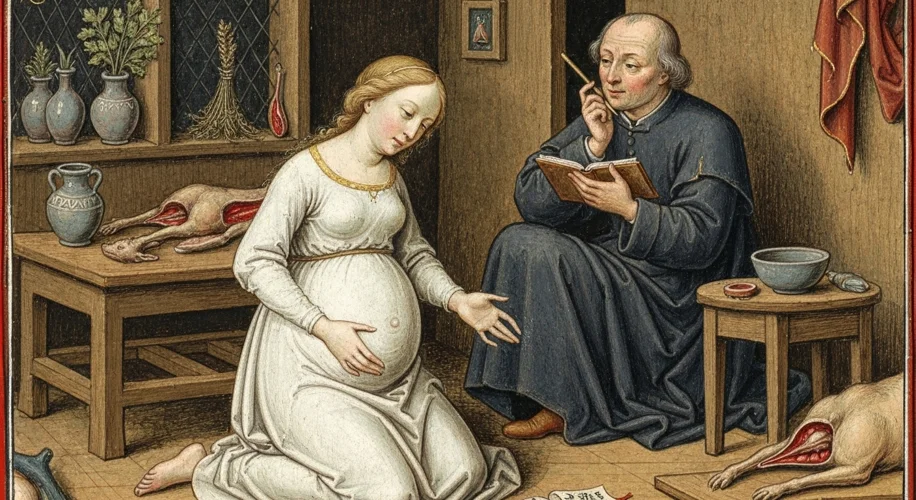The first perception of fetal movement in pregnancy, known as ‘quickening,’ has been a profound marker throughout human history, deeply woven into the fabric of medical, legal, and social understanding of life itself. For millennia, this subtle flutter, this initial sign of a growing life within, carried immense weight, transforming a woman’s body and her place in the world.
Ancient Whispers and Early Beliefs
In antiquity, the understanding of conception and gestation was shrouded in mystery. While anatomical knowledge was rudimentary, the experience of quickening was universally recognized. For many cultures, it was not merely a physical sensation but a spiritual one. Ancient Greek physicians, like Hippocrates and Galen, believed that the fetus was initially inanimate, animated by the mother’s vital spirits. Quickening, occurring typically between the 16th and 25th week of pregnancy, was seen as the moment the fetus received its “soul” or “life principle.” This philosophical and religious interpretation imbued the event with immense significance, often linking it to the beginning of personhood.

The Legal and Moral Compass of Quickening
This shift in understanding had tangible legal consequences. In many legal systems, particularly those influenced by Roman law and later English common law, quickening became a pivotal point. Before quickening, a fetus was not considered a legal entity. Therefore, abortion, while often morally condemned, did not carry the same legal weight as it did after the first fetal movements were perceived. The act of abortion before quickening was sometimes viewed as ending a potential life, whereas after quickening, it was considered the termination of an actual, albeit nascent, human being.
This legal distinction persisted for centuries. In England, for instance, abortion before quickening was not a capital offense. However, after quickening, performing an abortion that resulted in the mother’s death could lead to charges of murder, while killing the fetus itself was not a distinct crime but often subsumed under other offenses.
The Medieval and Renaissance Shift
As medical knowledge slowly advanced during the Middle Ages and the Renaissance, so too did the conceptualization of quickening. While the idea of ensoulment remained influential, physicians began to observe and document the process of fetal development with greater detail. Thinkers like Thomas Aquinas, while influential in solidifying the Aristotelian view of delayed animation, also contributed to the discourse. The precise timing and nature of quickening remained a subject of debate, but its role as a signifier of a developing life was solidified.

The Enlightenment and Beyond: Medicalization and Moralization
The Enlightenment era, with its emphasis on reason and scientific inquiry, brought new perspectives. Physicians began to analyze quickening more from a physiological standpoint. They recognized it as the physical growth of the fetus and the development of its musculature, allowing it to move within the amniotic sac. However, this medicalization did not diminish its importance; rather, it provided a more empirical basis for what had previously been a more mystical understanding.
In parallel, societal and religious views continued to shape the perception of quickening. Protestant reformers often focused on the sanctity of life from conception, subtly shifting the emphasis away from quickening as the sole moment of animation. Yet, in common law and practice, the traditional understanding often lingered.
The 19th Century and the Criminalization of Abortion
The 19th century marked a significant turning point. Driven by a confluence of factors, including the rise of the medical profession, evangelical religious movements, and evolving social norms, there was a concerted effort to criminalize abortion at all stages of pregnancy. The concept of quickening, once a marker for when a fetus gained legal protection, began to be reinterpreted. Abortion before quickening was increasingly framed not as ending a potential life, but as a morally reprehensible act against a developing human being.
This shift is evident in legislative changes across the Western world. By the end of the 19th century, most Western countries had laws that criminalized abortion from conception, effectively rendering the distinction of quickening legally obsolete, though the experience itself remained a powerful personal and cultural milestone.
Modern Echoes and Enduring Significance
Today, the term “quickening” is rarely used in medical or legal contexts, replaced by terms like “fetal movement.” Medical science has provided precise timelines for fetal development, confirming that a fetus is alive and growing from conception. However, the deep-seated cultural and emotional resonance of those first fetal movements persists. For many expectant mothers, feeling that initial kick, flutter, or roll is a deeply personal and profound experience, a confirmation of the life they carry and a tangible connection to their unborn child.

The history of quickening is a testament to how our understanding of life, medicine, and law evolves. It highlights a time when a woman’s internal experience served as a crucial marker in defining personhood, a concept that continues to be debated and redefined in our modern world. From ancient philosophical debates to Victorian legal battles, the flutter of life within the womb has always been a powerful signal, a whisper of existence that has shaped human history.

